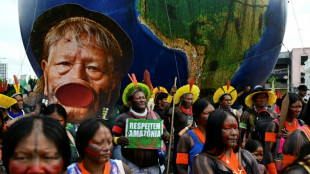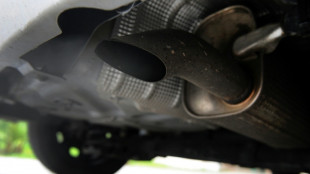
-
 Leo XIV celebrates first Christmas as pope
Leo XIV celebrates first Christmas as pope
-
Diallo and Mahrez strike at AFCON as Ivory Coast, Algeria win

-
 'At your service!' Nasry Asfura becomes Honduran president-elect
'At your service!' Nasry Asfura becomes Honduran president-elect
-
Trump-backed Nasry Asfura declared winner of Honduras presidency

-
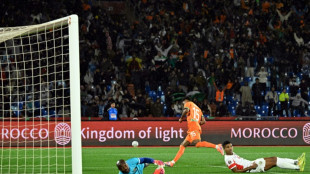 Diallo strikes to give AFCON holders Ivory Coast winning start
Diallo strikes to give AFCON holders Ivory Coast winning start
-
Spurs captain Romero facing increased ban after Liverpool red card

-
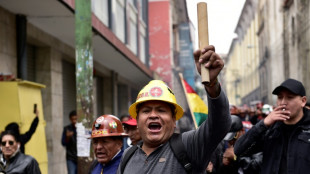 Bolivian miners protest elimination of fuel subsidies
Bolivian miners protest elimination of fuel subsidies
-
A lack of respect? African football bows to pressure with AFCON change

-
 Trump says comedian Colbert should be 'put to sleep'
Trump says comedian Colbert should be 'put to sleep'
-
Mahrez leads Algeria to AFCON cruise against Sudan

-
 Southern California braces for devastating Christmas storm
Southern California braces for devastating Christmas storm
-
Amorim wants Man Utd players to cover 'irreplaceable' Fernandes

-
 First Bond game in a decade hit by two-month delay
First Bond game in a decade hit by two-month delay
-
Brazil's imprisoned Bolsonaro hospitalized ahead of surgery
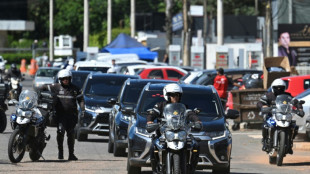
-
 Serbia court drops case against ex-minister over train station disaster
Serbia court drops case against ex-minister over train station disaster
-
Investors watching for Santa rally in thin pre-Christmas trade

-
 David Sacks: Trump's AI power broker
David Sacks: Trump's AI power broker
-
Delap and Estevao in line for Chelsea return against Aston Villa

-
 Why metal prices are soaring to record highs
Why metal prices are soaring to record highs
-
Stocks tepid in thin pre-Christmas trade

-
 UN experts slam US blockade on Venezuela
UN experts slam US blockade on Venezuela
-
Bethlehem celebrates first festive Christmas since Gaza war
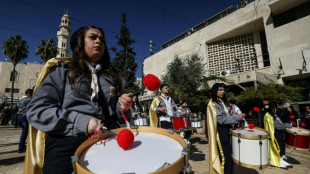
-
 Set-piece weakness costing Liverpool dear, says Slot
Set-piece weakness costing Liverpool dear, says Slot
-
Two police killed in explosion in Moscow
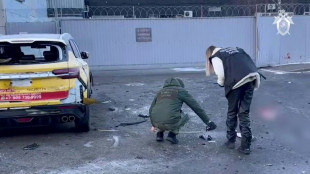
-
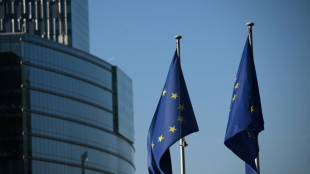 EU 'strongly condemns' US sanctions against five Europeans
EU 'strongly condemns' US sanctions against five Europeans
-
Arsenal's Kepa Arrizabalaga eager for more League Cup heroics against Che;sea

-
 Thailand-Cambodia border talks proceed after venue row
Thailand-Cambodia border talks proceed after venue row
-
Kosovo, Serbia 'need to normalise' relations: Kosovo PM to AFP
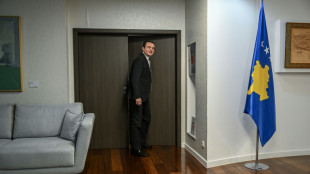
-
 Newcastle boss Howe takes no comfort from recent Man Utd record
Newcastle boss Howe takes no comfort from recent Man Utd record
-
Frank warns squad to be 'grown-up' as Spurs players get Christmas Day off

-
 Rome pushes Meta to allow other AIs on WhatsApp
Rome pushes Meta to allow other AIs on WhatsApp
-
Black box recovered from Libyan general's crashed plane

-
 Festive lights, security tight for Christmas in Damascus
Festive lights, security tight for Christmas in Damascus
-
Zelensky reveals US-Ukraine plan to end Russian war, key questions remain

-
 El Salvador defends mega-prison key to Trump deportations
El Salvador defends mega-prison key to Trump deportations
-
Stranger Things set for final bow: five things to know

-
 Grief, trauma weigh on survivors of catastrophic Hong Kong fire
Grief, trauma weigh on survivors of catastrophic Hong Kong fire
-
Asian markets mixed after US growth data fuels Wall St record

-
 Stokes says England player welfare his main priority
Stokes says England player welfare his main priority
-
Australia's Lyon determined to bounce back after surgery

-
 Stokes says England players' welfare his main priority
Stokes says England players' welfare his main priority
-
North Korean POWs in Ukraine seeking 'new life' in South

-
 Japanese golf star 'Jumbo' Ozaki dies aged 78
Japanese golf star 'Jumbo' Ozaki dies aged 78
-
Johnson, Castle shine as Spurs rout Thunder

-
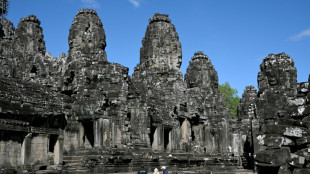 Thai border clashes hit tourism at Cambodia's Angkor temples
Thai border clashes hit tourism at Cambodia's Angkor temples
-
From predator to plate: Japan bear crisis sparks culinary craze
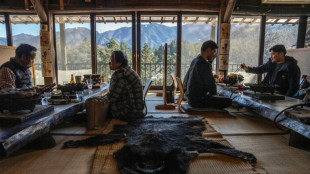
-
 Asian markets mostly up after US growth fuels Wall St record
Asian markets mostly up after US growth fuels Wall St record
-
'Happy milestone': Pakistan's historic brewery cheers export licence

-
 Chevron: the only foreign oil company left in Venezuela
Chevron: the only foreign oil company left in Venezuela
-
US denies visas to EU ex-commissioner, four others over tech rules


Rock on: how crushed stone could help fight climate change
From sugar plantations in Brazil to tea estates in India, crushed rock is being sprinkled across large stretches of farmland globally in a novel bid to combat climate change.
The technique is called Enhanced Rock Weathering (ERW) and aims to speed up the natural capture and storage of carbon dioxide -- a planet-warming greenhouse gas.
It is potentially big business with tech giants, airlines and fast fashion firms lining up to buy carbon credits from ERW projects to "offset" or cancel out their own emissions.
- What is ERW? -
ERW aims to turbocharge a natural geological process called weathering.
Weathering is the breakdown of rocks by carbonic acid, which forms when carbon dioxide in the air or soil dissolves into water.
Weathering occurs naturally when rain falls on rocks, and the process can lock away carbon dioxide from the air or soil as bicarbonate, and eventually limestone.
ERW speeds the process up by using quick-weathering rocks like basalt that are ground finely to increase their surface area.
- How effective is ERW? -
ERW is still a fairly new technology and there are questions about how much carbon it can remove.
One US study found applying 50 tonnes of basalt to a hectare of land each year could remove up to 10.5 tonnes of carbon dioxide per hectare over a four-year period.
But scientists applying basalt to oil palm fields in Malaysia and sugarcane fields in Australia measured much lower removal rates.
"Field trials are showing that there have been overestimates of the amount and rate captured," said Paul Nelson, a soil scientist at James Cook University who has studied ERW.
Rates depend on variables including rock type and size, how wet and hot the climate is, soil type and land management.
And measuring the carbon captured is difficult.
The most popular technique measures "cations", positively charged ions that are released from the rock during weathering.
But those cations are produced regardless of which acid the rock has reacted with.
"If there are stronger acids than carbonic, then it will react with those," said Nelson, so measurable cations are produced even when carbon dioxide is not captured.
That doesn't mean ERW is pointless, said Wolfram Buss, a researcher on carbon dioxide removal at the Australian National University, just that it needs to be carefully calibrated and measured.
"There is no doubt that this technique works," he said.
"However, to be sure how much carbon dioxide we actually remove, more funding is required to do fundamental studies."
- Are there other benefits? -
The added rock increases soil alkalinity, which can boost crop growth, soil nutrients and soil formation.
Basalt is both naturally abundant and often available as a byproduct of quarrying, lowering the costs of the process.
Experts note that even if the rock reacts with other acids in the soil, failing to lock away carbon dioxide at that stage, it can still have planetary benefits.
That is because acids in the soil would otherwise eventually wash into rivers and the sea, where acidification leads to the release of carbon dioxide.
If the rock neutralises that acid in the soil, "you've prevented carbon dioxide being released from the water into the atmosphere downstream", said Nelson.
The scale of those possible "prevented" emissions is not yet clear, however.
- What are the risks? -
ERW is broadly considered safe since it merely speeds up an existing natural process. However, some quick-weathering rocks have high levels of potentially poisonous heavy metals.
Scattering finely ground rock also requires appropriate protective gear for those involved.
But the main risk is that incorrect measurements overestimate captured carbon.
Some projects are already selling carbon credits from ERW. If a company buys an ERW credit to "offset" its emissions but the process captures less than projected, it could result in net higher carbon dioxide put into the atmosphere.
- Where is ERW being done? -
Projects are happening in most parts of the world, including Europe, North America, Latin America and Asia.
Earlier this year, a project in Brazil announced it had delivered the first-ever verified carbon-removal credits from an ERW project.
The process is being used or trialled in agricultural settings from tea plantations in India's Darjeeling to US soy and maize fields.
- What investor interest is there? -
An ERW startup -- Mati Carbon, working in India -- won the $50 million X Prize for carbon removal projects earlier this year.
In December, Google announced what was then the world's biggest ERW deal, for 200,000 tons of carbon removal credits, to be delivered by the early 2030s by startup Terradot.
The cost of the deal was not disclosed but a separate agreement by Terradot with a company representing firms including H&M sold 90,000 tons for $27 million.
D.Sawyer--AMWN

